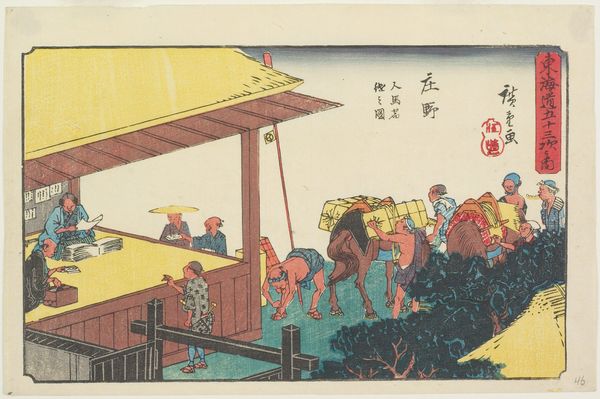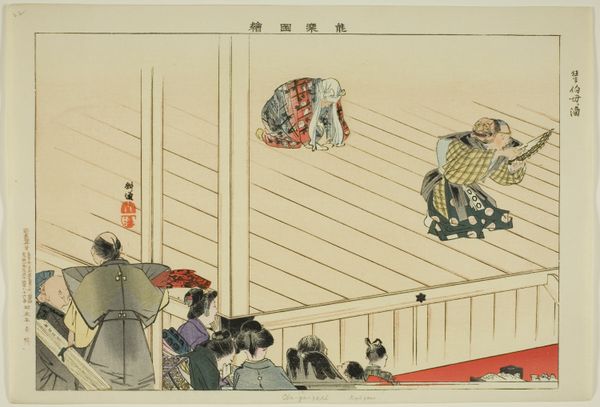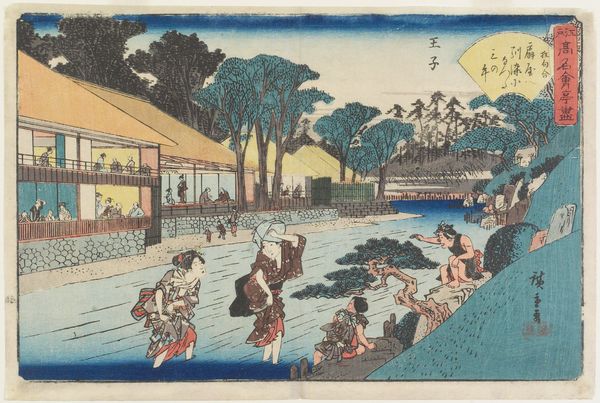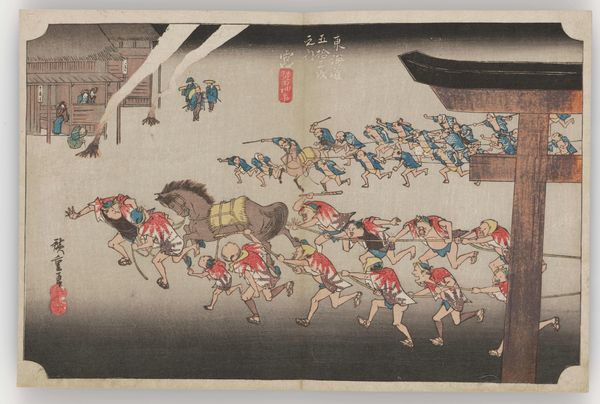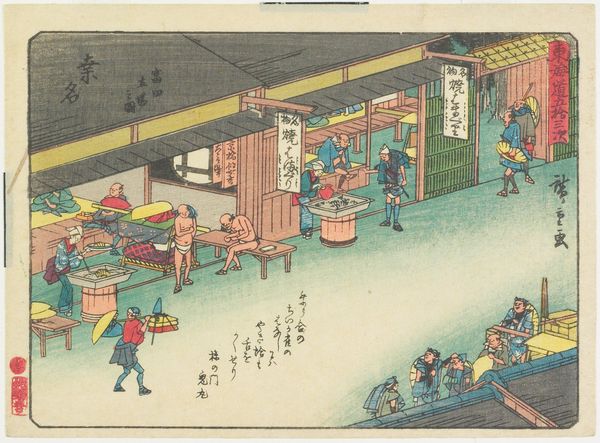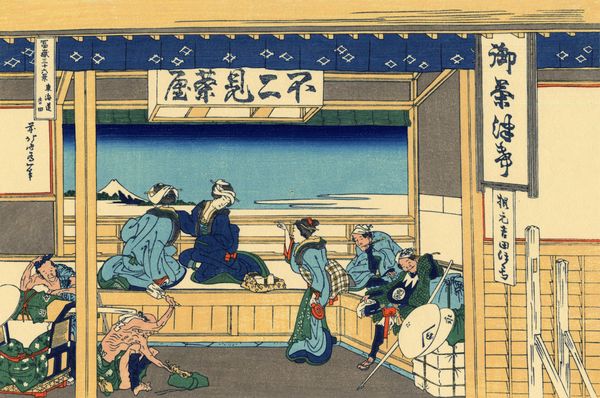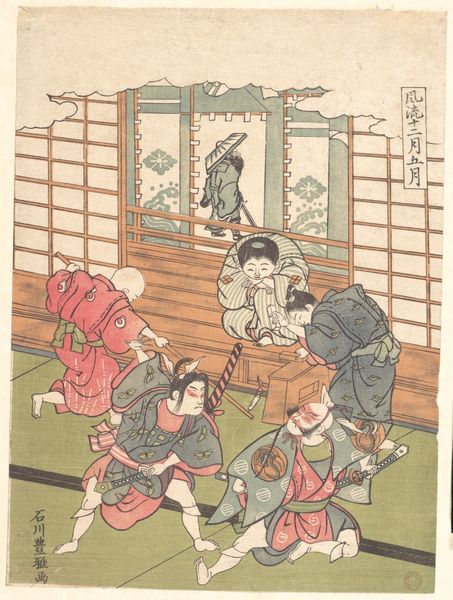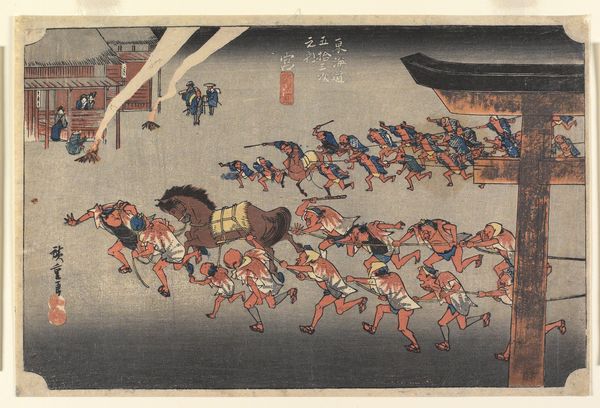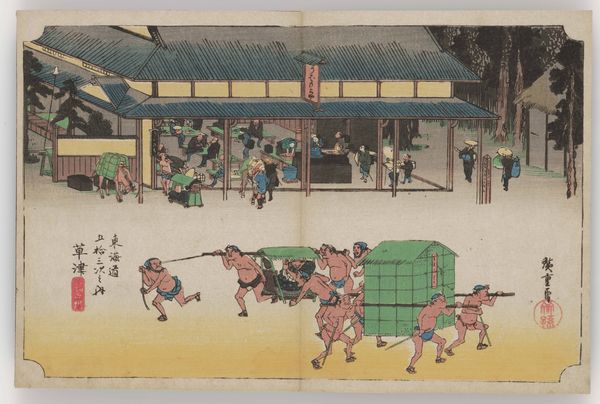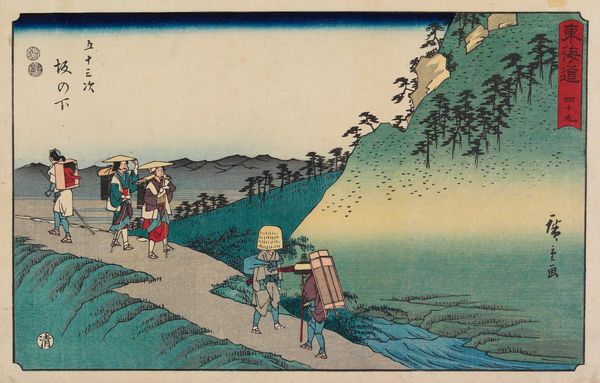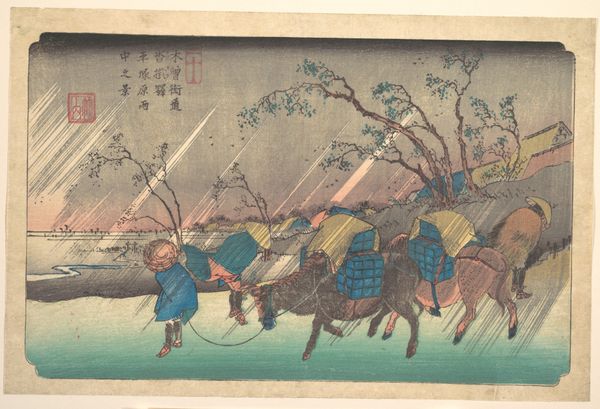
print, ink, woodblock-print
# print
#
asian-art
#
landscape
#
ukiyo-e
#
japan
#
ink
#
woodblock-print
#
genre-painting
Dimensions: 7 11/16 x 12 3/8 in. (19.5 x 31.4 cm) (image)
Copyright: Public Domain
Curator: Welcome. Today, we're exploring Utagawa Hiroshige's woodblock print, "Changing Porters and Horses at Shōno," created around 1841-1842. It is part of his "Fifty-three Stations of the Tōkaidō" series, now housed at the Minneapolis Institute of Art. Editor: My first impression is a sense of bustling everyday life punctuated by remarkable human effort. The composition feels horizontally dynamic, as our eyes are drawn to follow a journey both beginning and ending simultaneously. Curator: Indeed, it’s one of Hiroshige’s best-known works from the series. Shōno, as a station along the Tōkaidō road, becomes a place of temporary rest and labor. Observe how the print freezes this transient moment of exchange and depicts a social hierarchy and interdependence of working-class citizens during this era. Editor: And consider the socio-political dimensions of that exchange! It's not just a scenic view, it highlights how crucial this network of rest stations was for facilitating political and economic control during the Edo period. Hiroshige has centered working-class laborers and the mundane of their jobs into a powerful visual document. Curator: Precisely! This particular scene would resonate with those familiar with the Tōkaidō road because of the visual symbol of this routine exchange of people, animals, and goods. It reinforces the concept of cultural memory through a well-known symbol within Japan. Editor: The lack of distinctly individualized features across the working men also feels deliberate; almost emphasizing the collective, anonymized exploitation faced by many as a whole within this societal framework. It pushes us to ponder whose stories and which aspects of society get visually represented and which go ignored by the dominant discourses of visual expression during this era. Curator: But consider also how the figures engage with one another. Each gesture tells a story of their labor, resilience, and collective engagement; together suggesting continuity over time. These everyday workers may also be representations for how citizens in the labor force seek comfort from similar exchanges in contemporary society. Editor: Ultimately, what strikes me most is how "Changing Porters and Horses at Shōno" encourages us to rethink landscape art, intertwining representations of the Japanese natural world, the realities of class structures and the weight of historical narratives that are constantly at play. Curator: A remarkable work—one that freezes a brief, yet deeply evocative, instant in the theater of culture along a historically important corridor that reveals psychological endurance, collective symbolism, and labor interdependence.
Comments
No comments
Be the first to comment and join the conversation on the ultimate creative platform.
